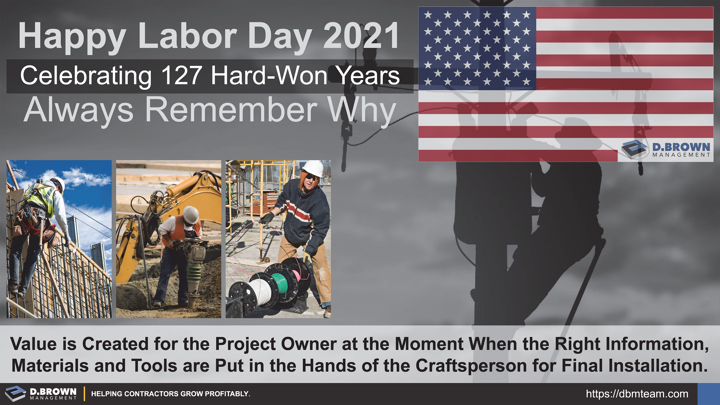There is incredible pride in being well-trained in a craft and being able to assemble raw materials into a working system. That capability does not happen in a vacuum nor did it come easily. Learn more at History.com.
There will always be tension in the balance between capital and labor. That tension is the heart of the economic engine that we have all benefited from as compared to our grandparents.
Management's responsibility is to design and refine systems for maintaining that balance between capital returns for the owners and the talent that creates those returns. They must balance this with other factors including:
- Total available construction work in the market
- Pricing, schedule and quality pressure from competing contractors
- Supply chain for the materials, tools and equipment required to perform the work
Management must not only compete for work but must also compete for talent. This is a trend that won't change for the foreseeable future. Even rapid advances in construction technology, fabrication and task-training we are unlikely to close the gap in construction talent until the 2030 timeframe. Management must provide their teams with:
- A safe and sustainable work environment
- Stability of employment
- Interesting work
- Good people to work with
- Opportunities for career growth on both the technical and leadership dimensions
- A good combination of compensation and benefits on par or above the market
Managers in the construction industry are also in short supply and that trend will only continue to worsen. Those leaders that do the best with this balance are those with the teams balancing:
- The creativity that develops systems that create real value, not just transactional value
- The discipline to ensure those systems work consistently and are constantly improved
Customers, capital and talent will run towards these leaders in the industry.

